A slightly outdated 120 roll of Ilford’s orthochromatic film left over from an earlier exercise seemed a good match for my recently purchased Zeiss Box Tengor. The Massive Development Chart recommends developing the film in my usual solution, Rodinal, at 1:100 for 10 minutes rated at 40 ISO. This gives slightly thin but fully toned negatives. The camera’s 1/40th or so shutter speed and smallest aperture of f16 therefore meshes nicely with ‘Sunny 16’, with two stops in hand for filters or duller conditions.

This type of film is not sensitive to red light so my favoured red filter for good sky tone would produce an almost blank negative. My earlier tests shown here suggest yellow or green being the choice for skies and to lighten foliage. Summer foliage is quite dark without a filter so either yellow or green will ‘lighten like’ and improve results for those subjects. Autumn colours are darkened though because of the lack of red sensitivity. Using a 2x Yellow filter and f11 in sunny conditions gives good exposure for skies and decent depth of field.
A recent, very useful article on this site, Spectral Sensitivity of B&W Film by Sroyon, goes into this aspect more extensively.
Sharpness and grain are both exceptional. The film was originally used mainly for copying work, both very necessary attributes for that purpose. My favourite subjects, townscape and record, suit it well as a result.
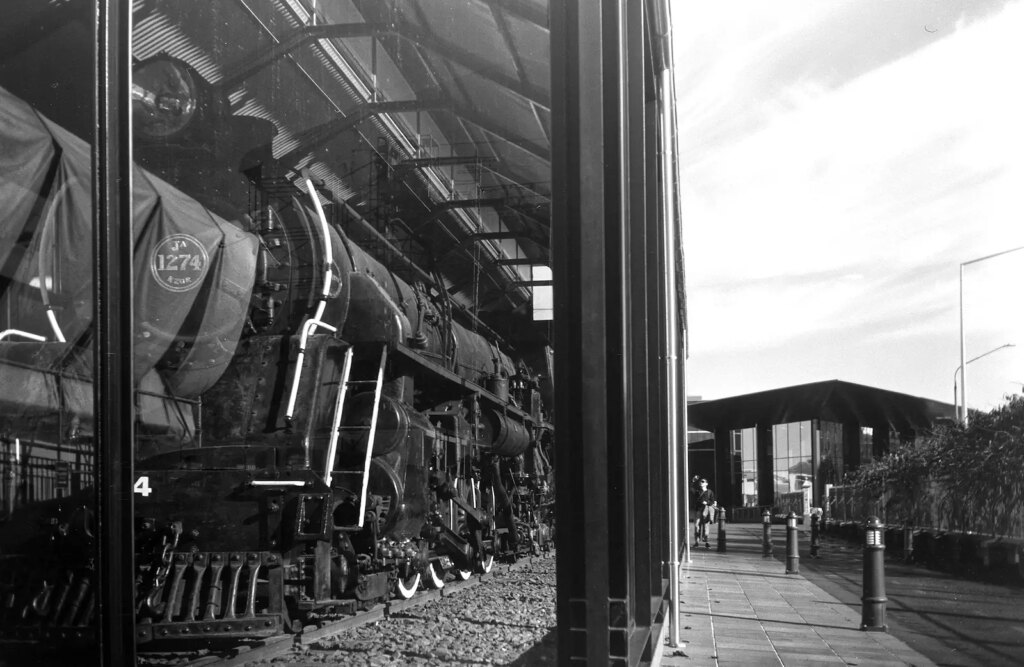
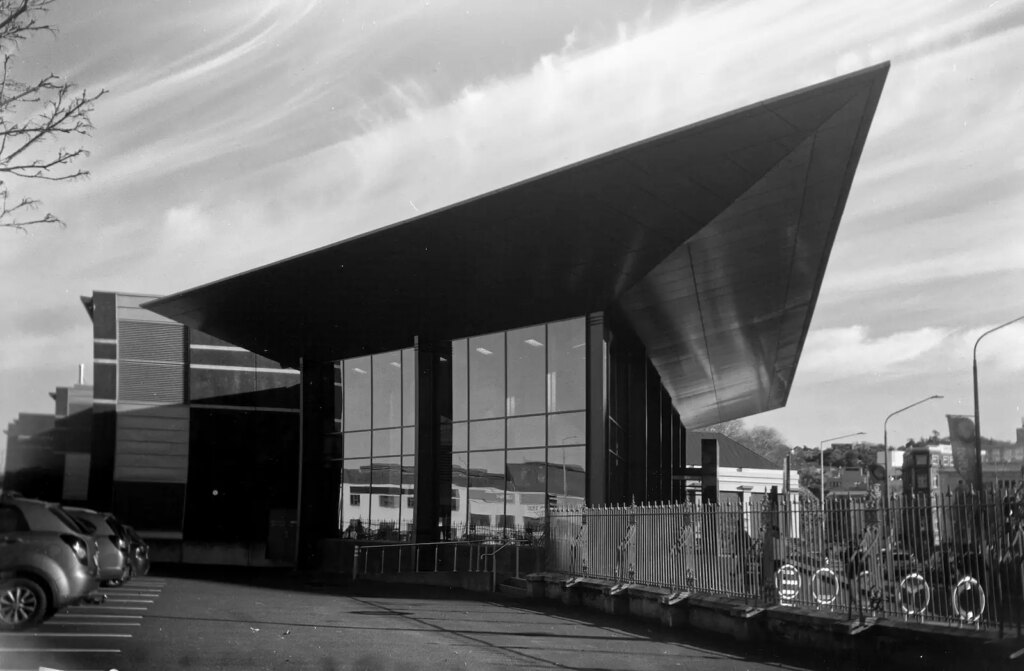
My chosen location here was the Toitu Otago Settlers Museum here in Dunedin, New Zealand. It is housed partly in existing, historic buildings suitably converted and in modern extensions. The collection includes a range of exhibits from steam locomotives down to the smallest domestic items, reflecting all the things that that have gone into producing today’s community. On a sunny day it offers a variety of possibilities for a slow film in my Box Tengor.
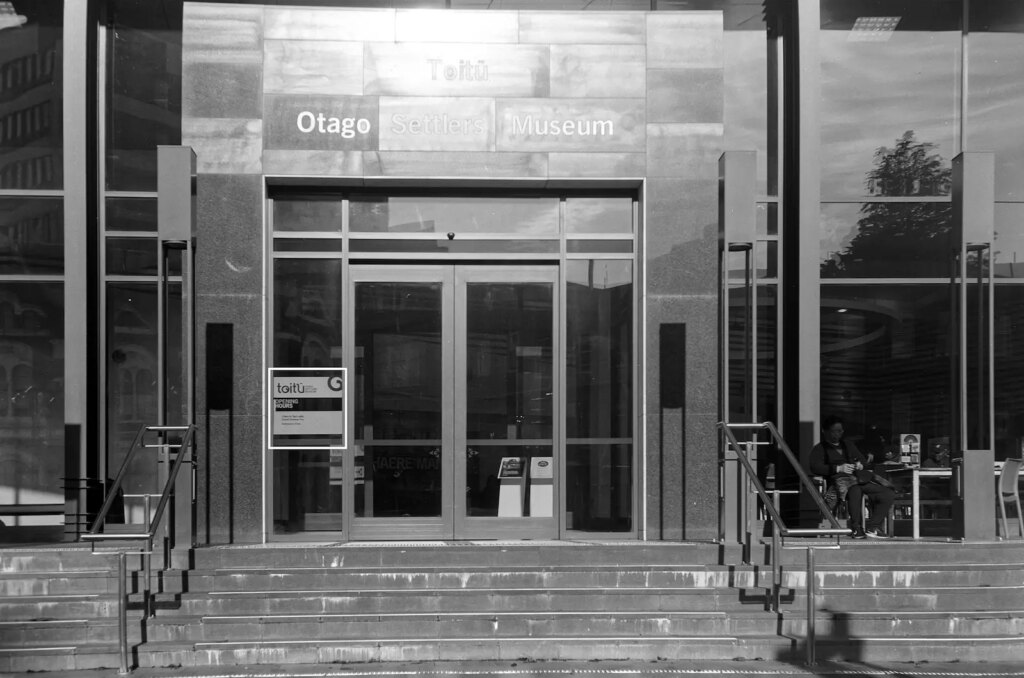
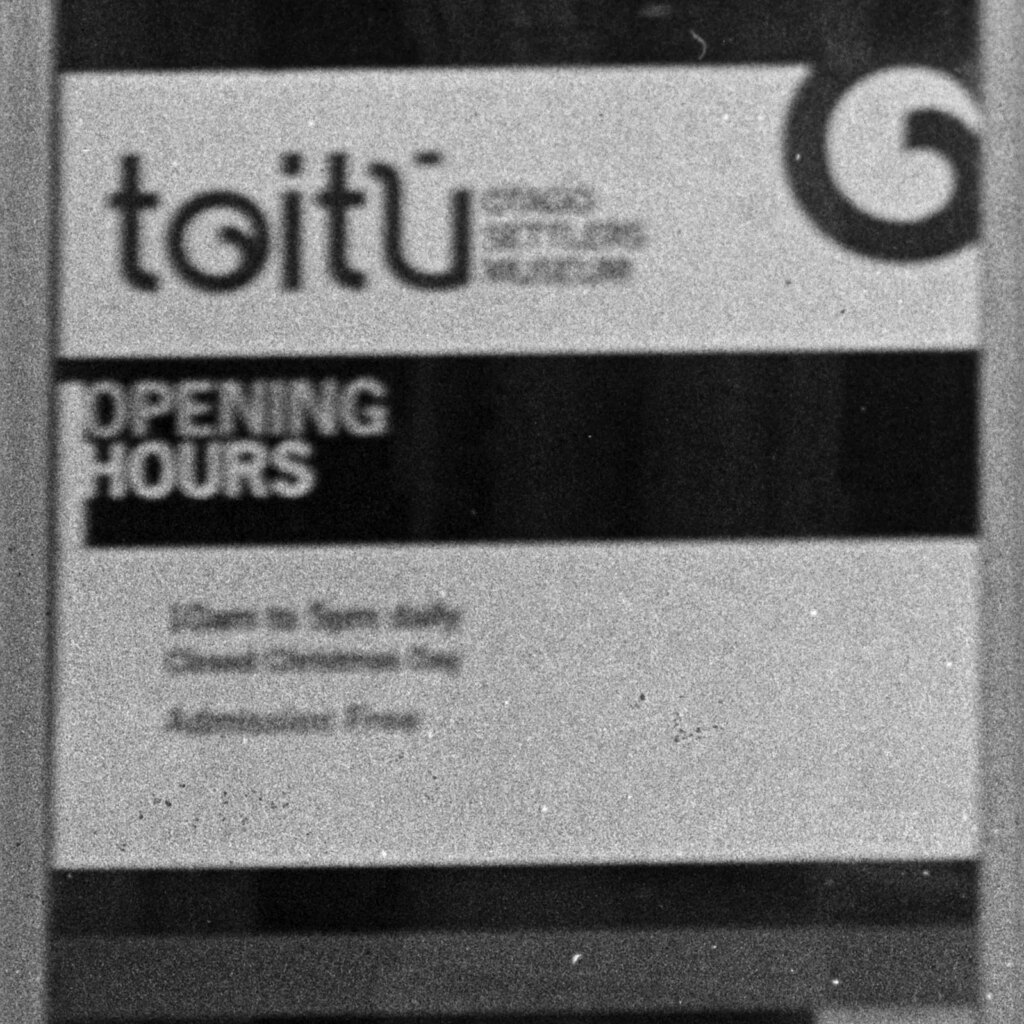
I try to be very selective when there are only 8 frames available but I duplicated the main entrance shot because I was not sure how the strong reflection of the sun off the polished marble would be rendered head on. The lettering still being legible on both demonstrates the film’s flare resistance, to be expected from such a thin emulsion I imagine. The enlarged detail, outlined in white on the full frame, is approx. 6mm or 1/4” square on the negative. It shows the film’s fine grain and detail capability, even with such a basic lens. The magnified image was made with a reversed Micro Nikkor on extension tubes.
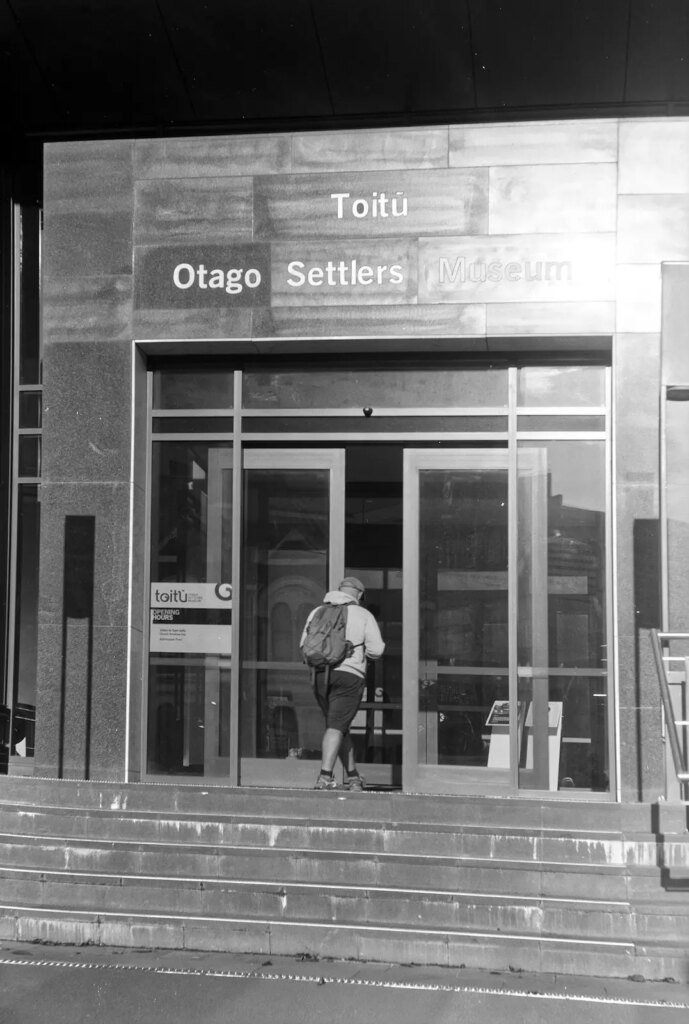
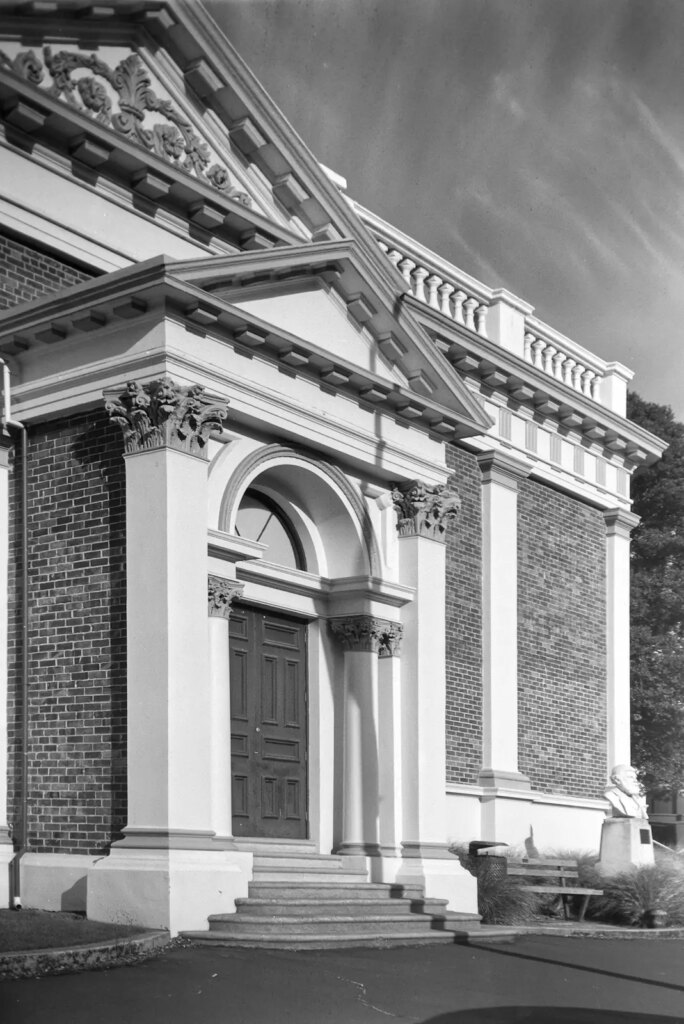
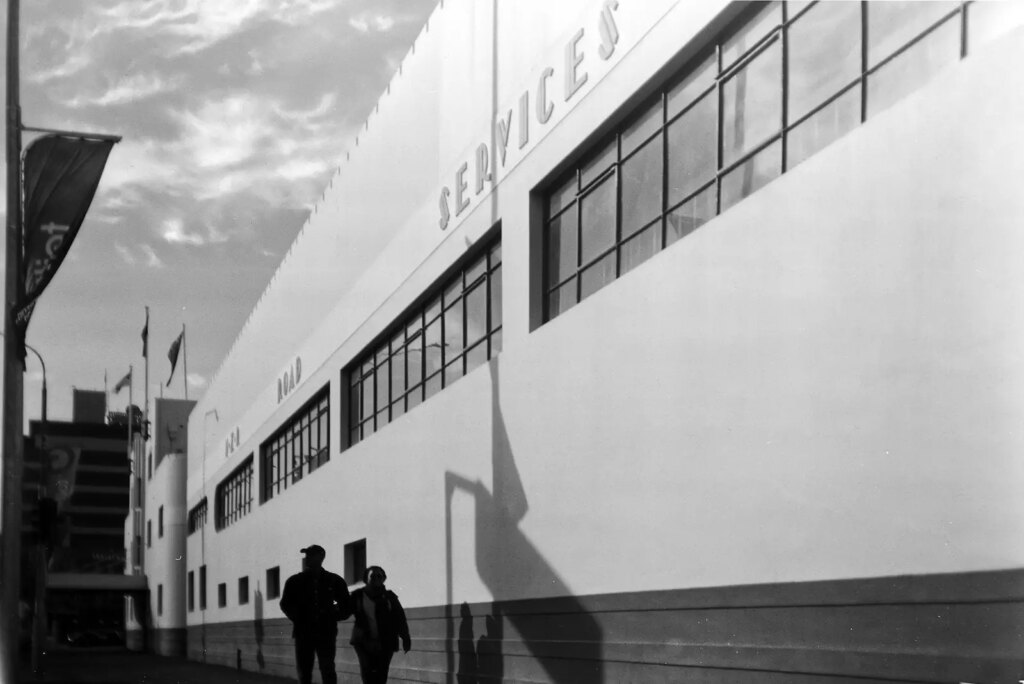
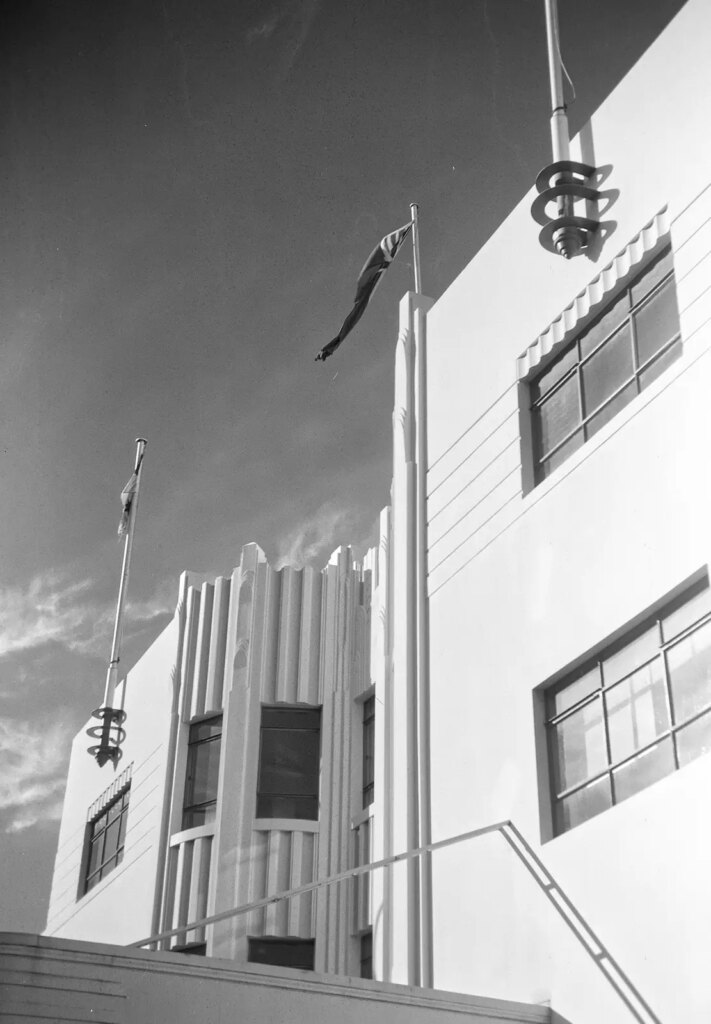
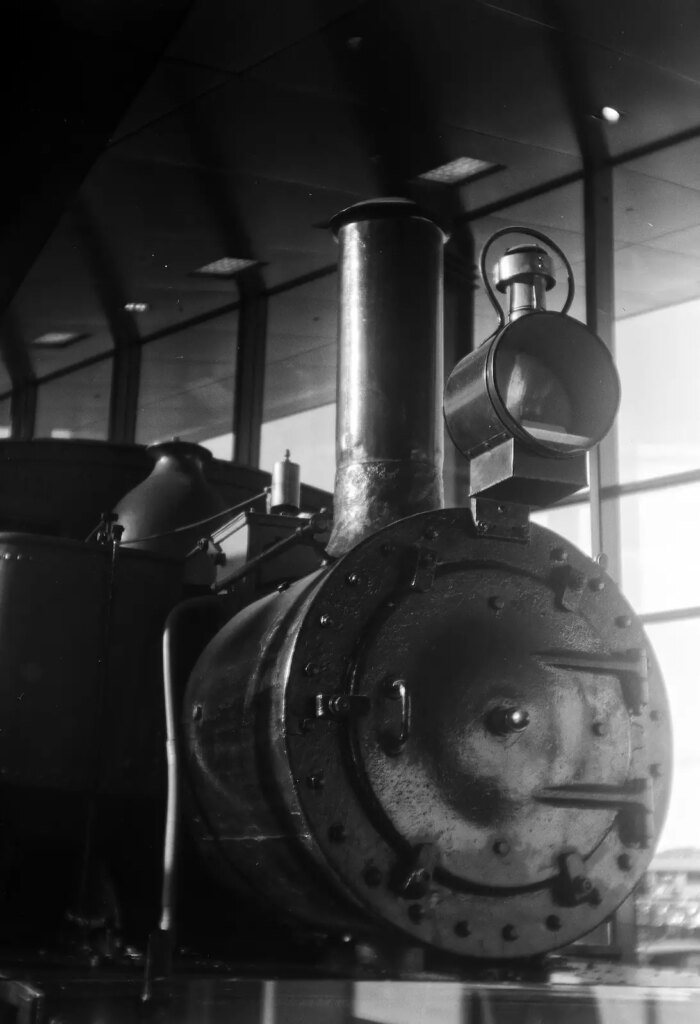
The other frames are also very satisfactory, the camera proving interesting to the couple walking towards me in the penultimate shot. There was a dramatic sky but my inability to use a red filter didn’t fully do it justice. Applying “Clarity” in Affinity brought out more detail without its usual emphasis of grain in this case.
For fairly accurate record work in monochrome, retaining the maximum detail, this film is one of the best. I think I prefer the results from the extended red sensitivity films from Rollei I have been using recently for a more pictorial result. Nevertheless, a very good film and I am constantly amazed at the quality the Box Tengor can produce.
Share this post:









Comments
Ralph Turner on Ilford Ortho Plus – A good match for a Box Tengor 56/2.
Comment posted: 29/06/2023
Comment posted: 29/06/2023
Richard Noll on Ilford Ortho Plus – A good match for a Box Tengor 56/2.
Comment posted: 29/06/2023
Comment posted: 29/06/2023
Dan Emerson on Ilford Ortho Plus – A good match for a Box Tengor 56/2.
Comment posted: 30/06/2023
Great tonal gradation plus you reminded me about Yello filters.
How do you find Rodinol's useful life once the bottle is open? How do you manage your Rodinal once opened?
Regards
Daniel
Comment posted: 30/06/2023